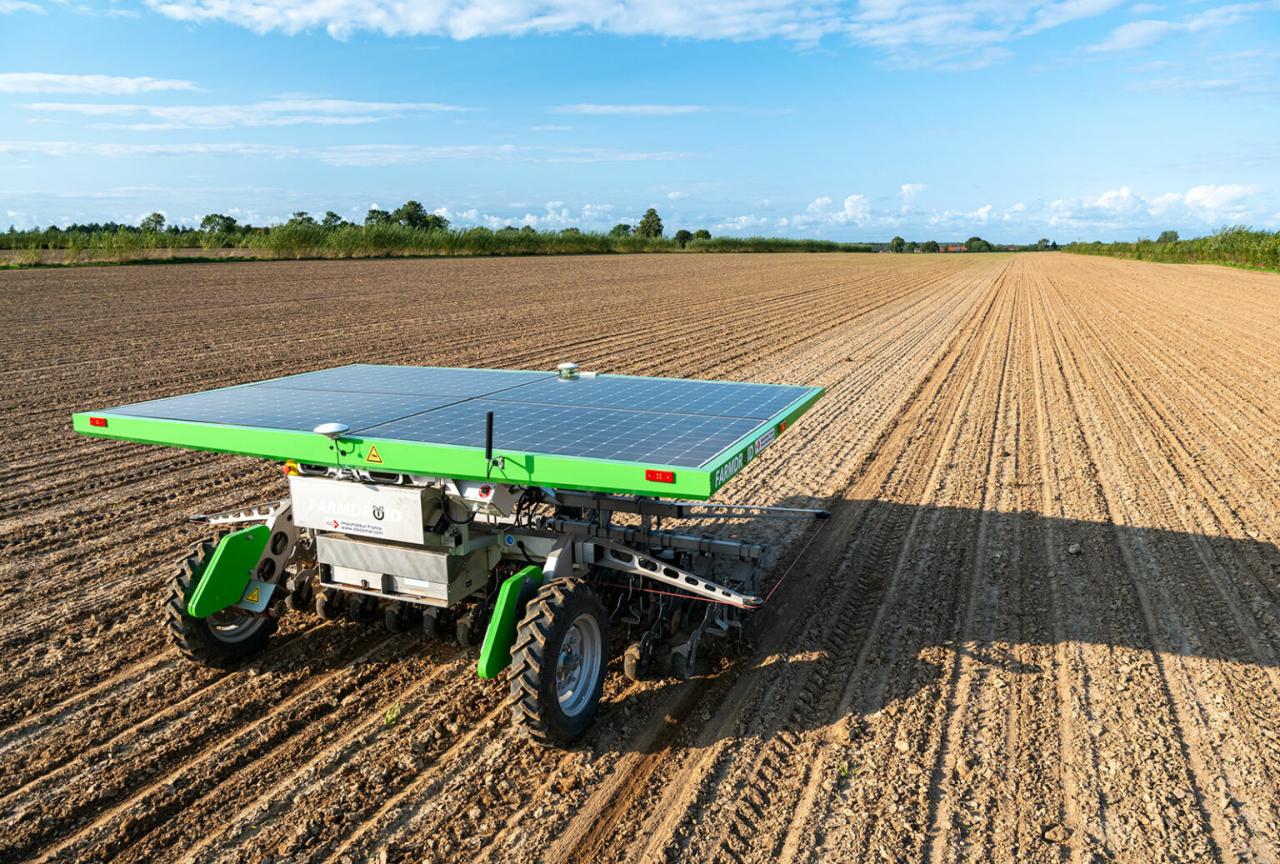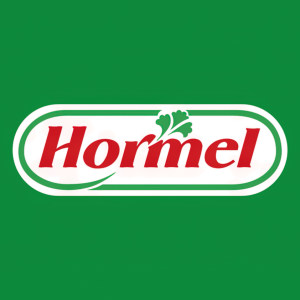The Farms of the Future
- None.
- None.
NORTHAMPTON, MA / ACCESSWIRE / December 13, 2023 / Hormel Foods Corporation
By DOMINIQUE SAINT MALO
Innovation is changing the agricultural landscape to lead us into a new age of food production.

For a look into how new technologies are affecting the future of farming, Hormel Foods asked Ithaca College Assistant Professor Dominique Saint Malo to share her insights on developments in the industry. Note: Hormel Foods does not endorse companies mentioned in this report.
Over the last 50,000 years, humans have settled and resettled around the world, clearing land in the pursuit of expanding agriculture. With a growing world population, innovation in farming is necessary for us not only to thrive, but to survive.
Global agricultural production on our available agricultural land has increased over the years, and according to Our World in Data, a British research organization, we can continue increasing production with the space we have allocated to date, so long as we reconsider the way we use it. Luckily for us, we are reaching a new age of farming. At this moment, for both independent and large farms, agricultural machinery manufacturers and grassroots organizations are rethinking and reinventing farming.
Has the world passed peak agricultural land?
Agricultural land is the sum of cropland and pasture used for grazing livestock. This is shown for three sources, which use different methods of estimation. While they disagree on how much land is used for agriculture, and the exact date that it peaked, they do all agree that we have passed the peak.
A New Age of Farming
Demand and population are increasing, and so is waste of all sorts - from animals, crops, forests and discarded food. Dumping this waste causes pollution, but smaller farms and companies are finding ways to reuse waste.
Worldwide, about
"You can think of this as a biomass roasting machine," says Vidyut Mohan, Takachar's CEO and cofounder. "Similar to a coffee roaster, we put agricultural waste into the equipment and it is heated in minimal amounts of oxygen; it leaves behind a dense, carbon-rich material used to make fuels, fertilizers or activated carbon." These carbon-rich materials (known as biochar and made from waste like straw, rice husks, coconut shells and pine needles) are then redistributed into the soil, making it healthier and reusable at a quicker rate than waste-burning would allow. The farmers see more yields faster, leaving a smaller carbon footprint.
Reusing Waste
Innovative companies are also using food waste to feed animals. Typically, about
While these savvy business models and innovations are exciting, until one or more of them prove they can scale, there will always be the question of accessibility. Can we truly guarantee companies like Do Good Chicken and Takachar will reach every corner of the world? Maybe not, but even smaller startups are focusing on markets more local to them and changing not just the farming landscape, but food culture at the same time.
Smallhold is an aptly-named company that started small. In fact, the success of this company seems to be attributed to its ability to keep things small. "The future is fungi" is one of the company's slogans, and it may be onto something. Smallhold is a Brooklyn-based mushroom farm, but its high-yield, low-impact urban farms and spaceship-like microfarms located inside grocery stores have sprouted in several U.S. cities. These mushrooms grow from sawdust (lumber industry waste) and don't have to be packaged or travel thousands of miles to reach the grocery store. Smallhold farms foster a regenerative agricultural loop, using waste like seed hulls to grow the mushrooms and subsequently working with scientists to create rich composts that are returned to the earth to enhance ecological resilience.
Insects in Agriculture
The "tsunami" of vertical insect farming is "on its way," says Jeffrey K. Tomberlin, entomologist and professor at Texas A&M. "It's probably going to revolutionize what agriculture is today. It's going to take agriculture and add another link into a more circular system." Organic waste feeds insects, whose waste then creates excellent fertilizer and enriches soil quality. Insects also provide high nutritional value to farmed animals, offering a more eco-friendly approach to raising livestock.
According to PROteINSECT, a project headed by the Food and Environment Research Agency in the United Kingdom, a typical chicken requires about 925 grams of protein during its lifetime. House fly larvae meal, a main focus of the PROteINSECT project, is highly digestible, provides an abundance of amino acids, and has a protein content of up to
AI AND ADVANCING
Farming Technology
While many of these startups and innovative thinkers are focusing on new techniques and technologies, some are looking at another volatile aspect of farming: the workforce. Farm labor is becoming harder to find despite the increasing amount of work to be done. Using artificial intelligence, huge forest and agricultural manufacturing companies like John Deere are making great strides toward making farming more efficient with fewer hands on deck. The company's fully-autonomous tractor, introduced in 2022, comes complete with 360-degree, high-speed-processor cameras that use AI to determine where the tractor can or cannot drive. Instead of spending hours plowing, farmers can tend to other farm tasks and check in on their tractors via iPad as needed.
Other innovative farming tools employing AI technology will soon be at our disposal. Climate change accelerates the growth rate of weeds that compete with crops, so farmers perceive a need to increase the use of weed-killing chemicals to keep pace. However, the traditional weed-killing process ends up destroying valuable plant life in addition to weeds. Today's expensive, widely-used ground sprayers miss the target with
Precision AI's weed-killing drones scan crops for weeds and move in close to efficiently zap only weeds. Precision AI bills its offering as "spray as a service." Their company will dispatch a truck with several AI-powered drones to a farm and spray their field at a per-acre cost. The farmer sees a higher crop success rate and spends less money on chemicals and traditional farming tools. Not far behind are AI-powered pollinator drones that determine which plants need what kind of pollination when, and AI-powered traps that kill and collect data on pests in a farmer's field, both also hands-free.
Research to the Rescue
Access to budding technology means nothing without the ability to learn from it; the pursuit of knowledge will help chart a sustainable future, and countless grassroots organizations and educational institutions are leading the way. Schools like Oregon State University and Colorado State University go beyond the classroom, actively participating in local agriculture and collaborating with farmers in their community to determine how ever-evolving farming technology can create a lasting impact on the world around them.
Cornell University - on the list of top 10 schools for both agriculture and computer science/information programs - administers Grow-NY, a food and agriculture startup competition focused on building an enduring, innovative food and agriculture cluster in the central New York region. With access to Cornell's cutting-edge research, physical labs, specialized equipment, manufacturing facilities and world-class scientists, Grow-NY provides New York State startups and entrepreneurs with resources and support needed to thrive as forward-thinking agriculture companies.
Companies like Do Good Chicken and John Deere share the notion that while the changes may seem small scale now, systemic and scalable shifts in the industry will have quantifiable results. How we make food is changing, and companies are starting to jump onboard. From grassroots organizations to massive global corporations and everyone in between, the evolution of agriculture is already underway.
View additional multimedia and more ESG storytelling from Hormel Foods Corporation on 3blmedia.com.
Contact Info:
Spokesperson: Hormel Foods Corporation
Website: https://www.3blmedia.com/profiles/hormel-foods-corporation
Email: info@3blmedia.com
SOURCE: Hormel Foods Corporation
View the original press release on accesswire.com
FAQ
What is the impact of new technologies on the future of farming for Hormel Foods Corporation (HRL)?
How has global agricultural production changed over the years?
Has the world passed peak agricultural land?
What is the significance of the new age of farming?







